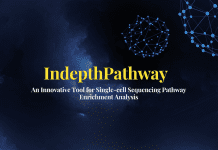For data visualization, the spiral arrangement offers two significant advantages. Firstly, data with long axes can be visualized, enhancing visualization resolution. Secondly, time-series data may be used to reveal recurring patterns.
spiralize is an R package that offers a generic solution for displaying data on spirals. It has many graphics functions that allow users to construct self-defined high-level graphics quickly.
Source: https://doi.org/10.1093/bioinformatics/btab778
spiralize can be used for visualizing subtype classification, phylogenetic tree, pairwise alignment, etc.
The package spiralize and its documentation are available freely at the Comprehensive R Archive Network (CRAN) https://CRAN.R-project.org/package=spiralize
Source: https://doi.org/10.1093/bioinformatics/btab778
Dr. Tamanna Anwar is a Scientist and Co-founder of the Centre of Bioinformatics Research and Technology (CBIRT). She is a passionate bioinformatics scientist and a visionary entrepreneur. Dr. Tamanna has worked as a Young Scientist at Jawaharlal Nehru University, New Delhi. She has also worked as a Postdoctoral Fellow at the University of Saskatchewan, Canada. She has several scientific research publications in high-impact research journals. Her latest endeavor is the development of a platform that acts as a one-stop solution for all bioinformatics related information as well as developing a bioinformatics news portal to report cutting-edge bioinformatics breakthroughs.






